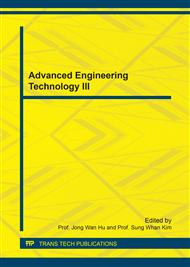p.667
p.675
p.681
p.689
p.694
p.701
p.707
p.713
p.720
Using Analytic Hierarchy Process to Optimize PESTEL Scenario Analysis Tool in Huge Construction Projects
Abstract:
This paper uses the Analytic Hierarchy Process to optimize the PESTEL analysis. The scenario: pre-construction and assembly factors of huge civil engineering construction projects. Several managers use too many criteria to evaluate large projects. It suggests that there may be few important criteria that summarize the manager's preference. To demonstrate the feasibility of the proposed hypothesis, the authors prepared a qualitative and exploratory study. Conclusions are based on the judgment of an expert interviewed. As expected, the hypothesis was considered plausible. Two main criteria corresponded to 71% of the expert's preference. The result resembles a Pareto distribution.
Info:
Periodical:
Pages:
707-712
Citation:
Online since:
June 2017
Keywords:
Price:
Сopyright:
© 2017 Trans Tech Publications Ltd. All Rights Reserved
Share:
Citation:


